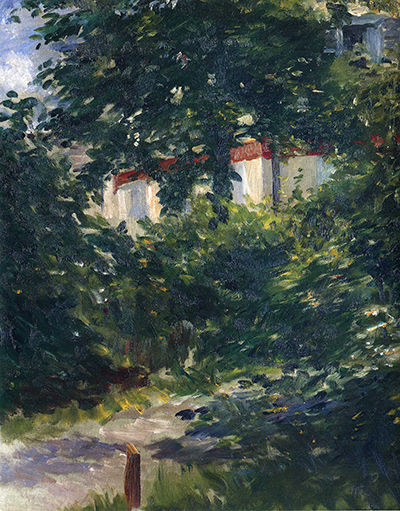Manet's 1882 portrait of the garden around his house at Reuil, is often overlooked in art history, because of the dominating celebrity of Monet’s painting of his garden at Giverny.
Manet and his wife Suzanne, were spending a period in this small village, just west of Paris. Unlike Giverny, where the garden was the artist’s creation, the Manets were renting this house in the hope of improving Edouard Manet’s health. It doesn’t seem to have been a particularly congenial location for Manet, although he produced a number of paintings of the house and garden and of his wife. The village was small and quiet, consisting of a number of different squares. There was little company for the sociable Manet although his sojourn at 18, Rue de Chateau was meant to provide him with rest.
You wouldn’t sense from the painting, that Rue de Chateau was a narrow cobbled lane, with no chateau to be seen, and that the house had a small garden. There was a church at one end of the lane, and the other end led on to the road to Sevres, and a hospital. A somewhat ominous set of neighbours for an artist in failing health. He produced fewer oil paintings during his time at Reuil, but did paint a number of still lives in watercolour, including the beautiful Two Roses on a Tablecloth. Critics have noted that at this time, Manet’s paintings become somewhat remote, while his still lives seem to glow with vitality.
In the painting of the garden around his house, a path leads up to the house, which is obscured by foliage, except for its roof. The foliage is broken up and it is hard to identify the separate trees or shrubs because the forms are not distinctly separated. Manet didn’t like the countryside, and yet his appreciation of this rich and subtle greenery is evident in the painting. There is a certain sense of mystery about the mostly-obscured house, as though it is keeping its secrets. Manet was now almost paralysed by locomotor ataxia. However, he could sit in the garden and paint. He returned to Paris in October, no doubt grateful to leave Reuil and take up the threads of his Paris life again.




